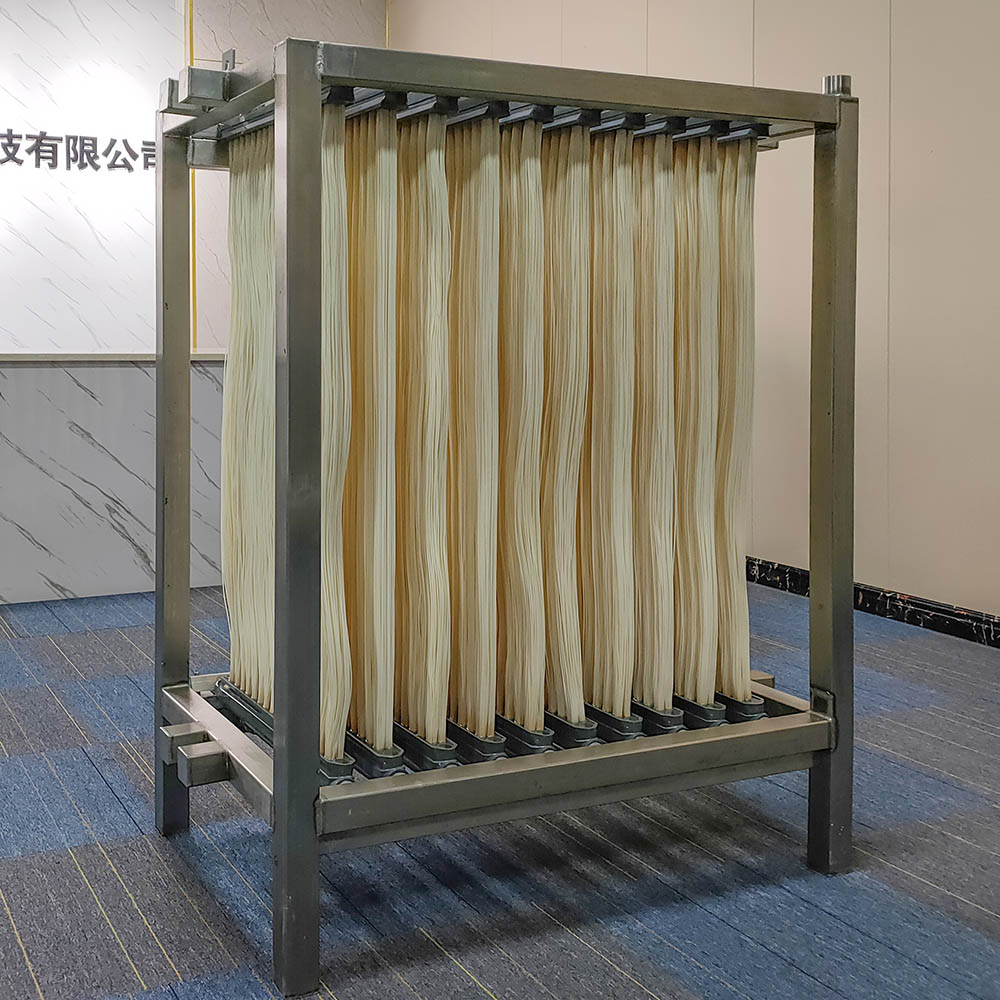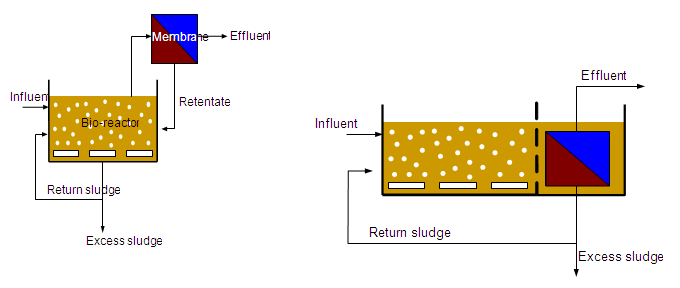Exploring the Environmental Impact of Membrane Bioreactor in Wastewater Treatment
Exploring the Environmental Impact of Membrane Bioreactor in Wastewater Treatment
Blog Article
Comprehending Membrane Bioreactors: The Future of Wastewater Therapy
Membrane layer bioreactors (MBRs) stand for a notable technology in the field of wastewater therapy, incorporating biological processes with sophisticated membrane layer filtration to improve effluent high quality. As global water deficiency and rigid regulative frameworks become significantly pressing problems, MBR technology provides a reliable feedback through its capability to decrease impact and optimize resource recovery.
What Are Membrane Bioreactors?

The core parts of MBR systems consist of a bioreactor where microbial task takes place and a membrane layer unit that filters the mixed liquor. This dual functionality allows the simultaneous deterioration of raw material and solid-liquid splitting up in a solitary step. MBRs can operate in both submerged and external configurations, with submerged systems being much more common due to their small style and operational efficiency.
The adoption of MBR technology has actually obtained grip in different applications, ranging from community wastewater treatment to industrial effluent management. MBRs are particularly useful in circumstances where room is restricted or strict effluent quality criteria have to be satisfied. By preserving a high concentration of microorganisms within the bioreactor, MBRs boost the destruction of organic pollutants, therefore producing higher therapy effectiveness compared to typical techniques.
Key Advantages of MBR Technology
The assimilation of biological therapy with membrane purification in MBR systems provides countless advantages that establish it aside from traditional wastewater treatment approaches. One of the key benefits is the boosted effluent quality. MBRs successfully remove suspended solids and pathogens, accomplishing higher levels of filtration that meet rigid discharge criteria and help with water reuse applications.

An additional significant advantage is the minimized sludge manufacturing. MBR systems generate less excess sludge, resulting in reduced disposal prices and a decrease in environmental effect. The shut nature of the membrane layer system decreases the risk of odor discharges and improves general procedure control.
Last But Not Least, MBRs are adaptable and versatile, making them suitable for various wastewater types, including industrial and local resources. The capacity to incorporate with innovative therapy modern technologies better boosts their performance, making MBRs an encouraging solution for the future of wastewater management.
Obstacles and Limitations of MBRs
While MBR technology offers numerous advantages, it additionally encounters numerous obstacles and restrictions that can affect its extensive adoption. One significant challenge is the high resources and operational costs linked with MBR systems. The first financial investment for membrane materials and investigate this site the necessary framework can be significant, making it less accessible for smaller sized communities or markets.
In addition, membrane fouling stays a vital issue that can lessen system efficiency and increase upkeep needs. Fouling occurs when solids, natural issue, or microorganisms gather on the membrane layer surface, bring about minimized permeability and calling for frequent cleaning or replacement.
An additional constraint includes the complexity of the modern technology. MBR systems need competent personnel for procedure and maintenance, which can be an obstacle in regions with restricted technical experience. The disposal of invested membranes provides ecological issues, as the products are frequently not biodegradable and can contribute to throw away management difficulties.
Last But Not Least, while MBRs can efficiently deal with a vast array of wastewater, they might not be suitable for all applications, especially those with high focus of fats, oils, and oils, necessitating additional research and advancement to address these limitations.
Applications of Membrane Bioreactors
In numerous fields, membrane bioreactors (MBRs) have emerged as a functional remedy for wastewater treatment (Membrane Bioreactor). Their applications span community, commercial, and farming setups, showcasing their adaptability and efficiency in diverse atmospheres. In metropolitan wastewater therapy plants, MBRs significantly enhance effluent quality, enabling water reuse and minimizing the ecological effect of released wastewater
Industrially, MBRs are used in food and drink handling, fabric manufacturing, and pharmaceutical manufacturing, where they effectively treat high-strength waste streams. Their ability to take care of varying tons and varying contaminant concentrations makes them particularly valuable in these sectors. Additionally, MBRs facilitate the elimination of virus, put on hold solids, and raw material, adding to compliance with stringent discharge laws.
In farming, MBRs are progressively utilized for treating agricultural drainage and animals wastewater, making it possible for the recovery of nutrients for fertilizer manufacturing. They additionally help in the therapy of greywater for irrigation, advertising lasting water monitoring methods.
The adaptability of MBRs is more evidenced by their assimilation with various other innovations, such as anaerobic digestion and progressed oxidation processes, enhancing total performance and resource recuperation in wastewater treatment systems.
The Future of Wastewater Treatment
Innovations in innovation and a growing focus on sustainability are shaping the future of wastewater therapy. Membrane bioreactors (MBRs) exhibit this shift by incorporating biological therapy procedures with membrane filtering, resulting in high-quality effluent appropriate for reuse. The trend in the direction of circular economic situations is triggering facilities to embrace MBRs for their ability to recuperate resources, such as water and nutrients, from wastewater.
Advancements in membrane materials and configuration are improving the performance and durability of MBR systems, lowering operational prices and energy usage. Smart technology combination, consisting of real-time tracking and automated control systems, is more optimizing efficiency and making it possible for predictive upkeep, hence reducing downtime.
Additionally, societal expectations and regulative stress are pushing industries and towns to take on even more sustainable techniques. Membrane Bioreactor. The shift in the direction of decentralized wastewater discover this therapy solutions is acquiring grip, permitting localized therapy that decreases transportation expenses and power usage
Verdict
Membrane bioreactors (MBRs) represent a transformative method to wastewater treatment, incorporating organic procedures with innovative membrane layer technology. The advantages of MBRs, including improved effluent high quality, minimized spatial needs, and reduced sludge manufacturing, place them as a viable solution amid growing urbanization and stricter environmental policies. Despite existing challenges, the continued development in membrane materials and operational techniques guarantees to reinforce the efficacy and adoption of MBRs, ensuring their pivotal duty in the future of lasting wastewater monitoring.
Membrane layer bioreactors (MBRs) represent a noteworthy development in the field of wastewater click to investigate therapy, incorporating organic processes with sophisticated membrane filtration to boost effluent high quality.Membrane bioreactors (MBRs) combine organic therapy processes with membrane layer purification to successfully treat wastewater.The integration of organic treatment with membrane layer filtration in MBR systems provides various advantages that establish it apart from traditional wastewater therapy approaches. Membrane layer bioreactors (MBRs) exhibit this shift by incorporating biological treatment processes with membrane purification, resulting in high-grade effluent appropriate for reuse.Membrane bioreactors (MBRs) stand for a transformative method to wastewater therapy, integrating biological procedures with innovative membrane layer innovation.
Report this page